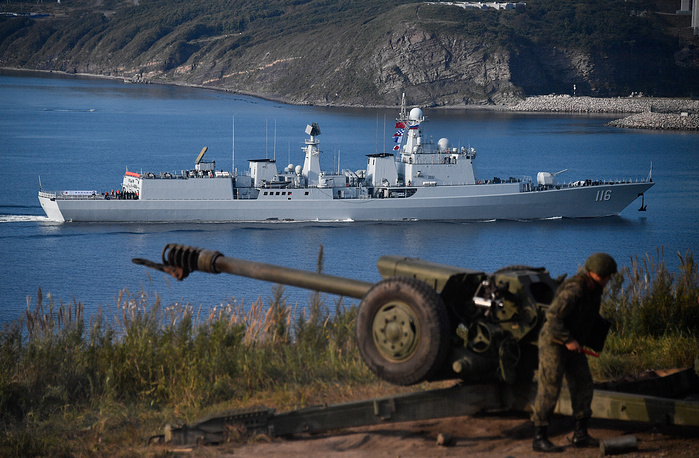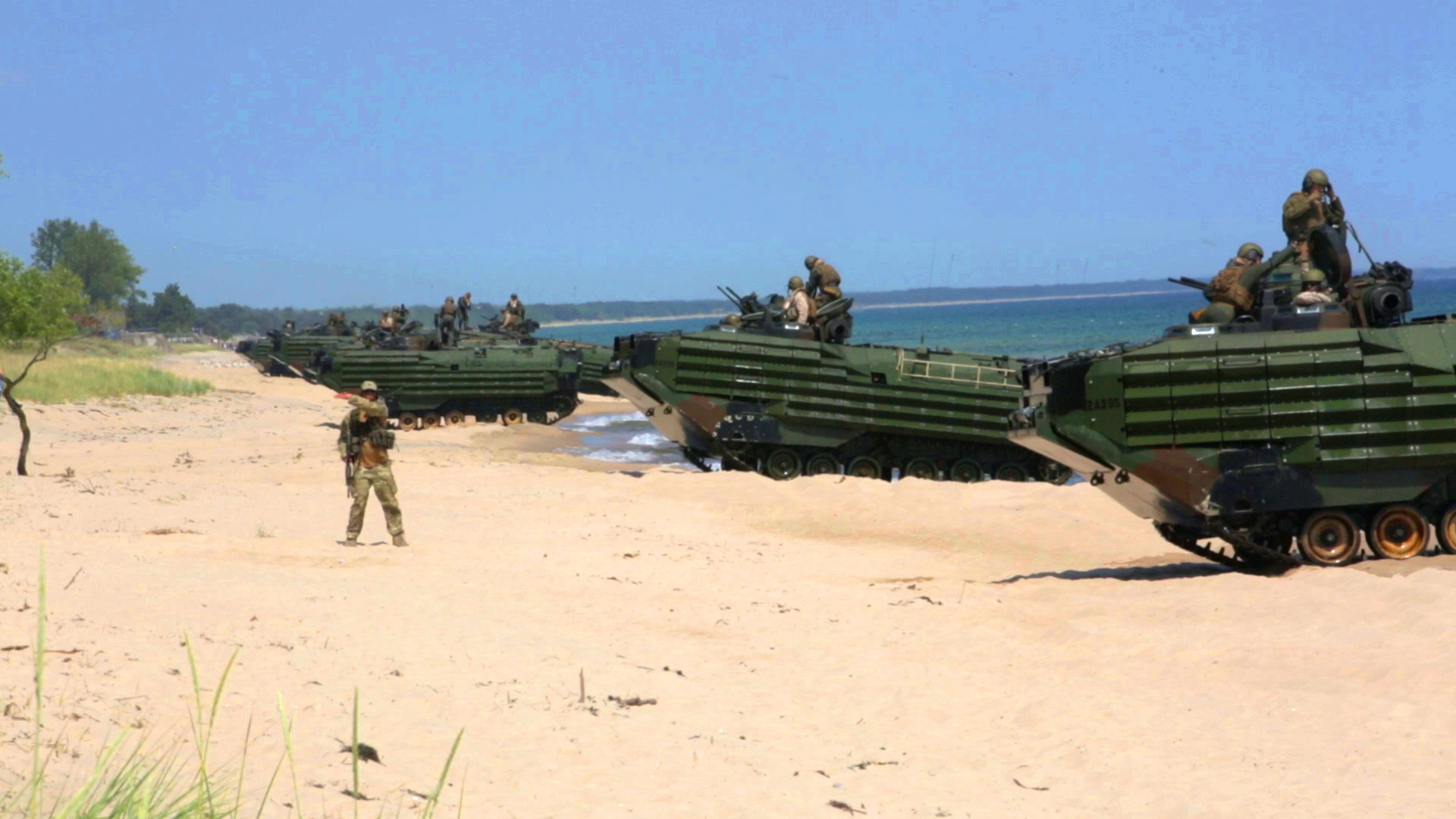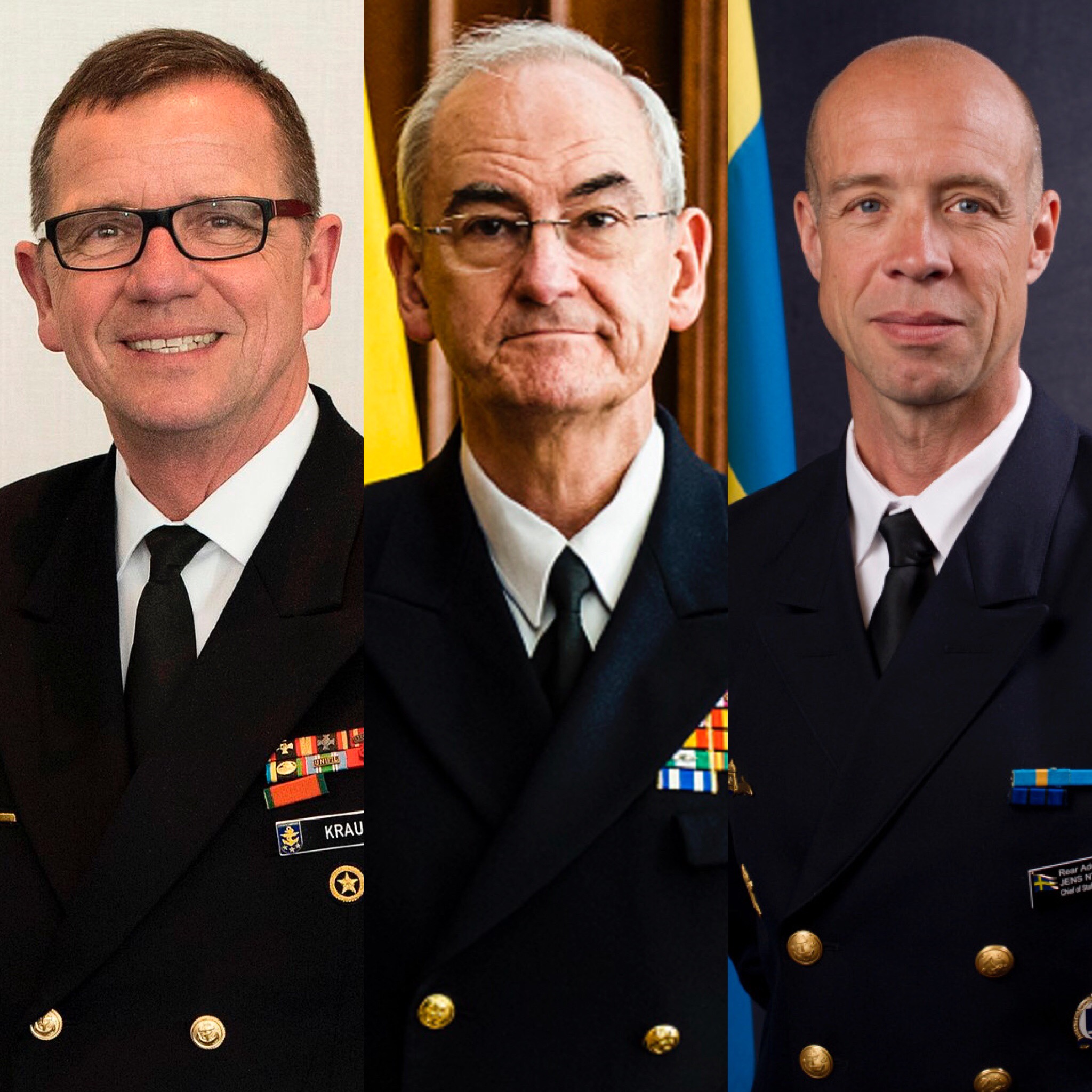
NATIONAL HARBOR, Md. – The optimism for peace at the end of the Cold War has proven to be a mistake as Russia used the lull in Western defense attention to occupy Crimea and aggressively support separatists in Ukraine and insert itself in the Syrian civil war, three chiefs of European navies agreed on Monday.
“We were very optimistic in 1989,” Vice Adm. Andreas Krause, Inspector of the German Navy, said on Monday at Navy League’s Sea Air Space 2018 exposition.
“2014 came like a surprise.”
Meanwhile, the Chinese began paying more attention to affairs in and around the Mediterranean, including establishing its first overseas military base in the Horn of Africa
“It is a matter of fact that we need to take [Chinese presence] into account” in assessing the changed security environment. It also means improving our capability to deter possible future aggression, said Chief of Staff of the Spanish Navy Adm. Teodoro Lopez Calderon.
For Spain, it means building up its military-industrial strength to produce more capable submarines and frigates that can operate with NATO partners. It also means working with navies and coast guards in the West and North Africa to curtail human trafficking and other illegal activities. He estimated 70,000 illegal immigrants tried to reach Spain last year.

In Sweden, “we’re emphasizing our region,” the Baltic where Moscow is increasingly making its maritime presence felt at Cold War levels – in the air, on the surface and below. Rear Adm. Jens Nykvist, Sweden’s Chief of Navy, said.
“It is an increasing number of ships” of all flags – commercial and military, operating in the Baltic, and that has really changed Stockholm’s approach to security off its 1,700-mile coastline.
All three said these geopolitical changes have focused their nations’ attention on increasing defense spending and emphasizing modernization and replacement of aging systems. Calderon said that modernization spending was central to deterrence.
Nykvist said, “Increasing the number of surface ships is priority number one” and increasing cooperation with NATO.
All the chiefs wanted to speed the cycle of producing ships. “Ten years is way too long a time,” Nykvist said from design to commissioning.

German Inspector of the Navy Vice Adm. Andreas Krause, Chief of Staff of the Spanish Navy Adm. Teodoro Lopez Calderon, Swedish Chief of Navy Rear Adm. Jens Nykvist
Government, the services and industry “have to talk honestly” about cost, money available, life-cycle expenses, Krause said. Industry needs to add in these conversations a “from here it becomes risky” appraisal.
Krause, looking specifically at European needs, said, “We procure in small numbers,” so savings are difficult to achieve if each nation proceeds independently. He pointed out that Germany and Norway’s recent agreement to produce submarines means really producing a common vessel and not one with the same name and a large number of variants.
Krause said as he looks to the future “the priority is on people” because “they are our most strategic resource.” Using the manning of four future frigates that incorporate more technology and automation as an example, he said the German navy would have eight crews to allow the vessel to operate for two years. “We would swap [crews} every four months.”
Instead of downsizing as the German armed forces did for the 24 years before the seizure of Crimea, “the German navy will grow in numbers and capability … and will remain a reliable partner” to NATO on the northern flank and the European Union mission in the Aegean and Mediterranean to control the flow of migrants on the southern.
“We will continue to be [balanced and flexible] so Spain will be replacing quantity for effective capability,” Calderon said as it fleet modernizes.
Nykvist said presence on the water was crucial for his navy – a gray zone of operations — because the Baltic is a relatively small area and shallow so the potential attack can come quickly and unexpectedly on a nation that received 89,000 ship calls in Swedish ports last year.





